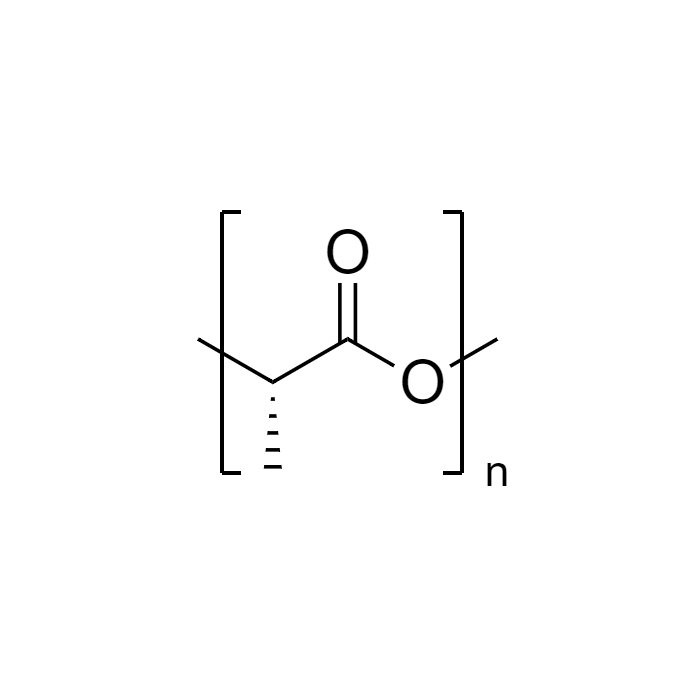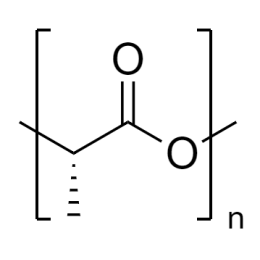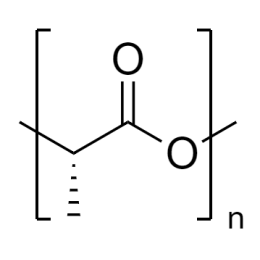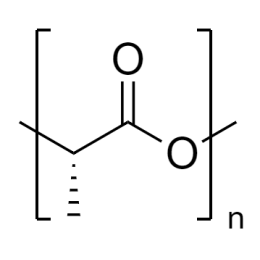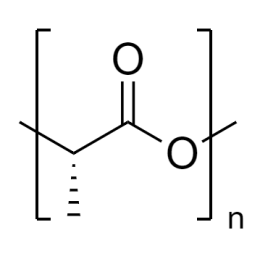Poly(L-lactide), IV 1.6 dL/g
CAS Number:
26161-42-2
Linear Formula:
(C3H4O2)n
In stock
Poly(L-lactide) (PLLA) is a bioresorbable and biodegradable polymer that is highly sought after in the biomedical industry due to its excellent biocompatibility and mechanical properties. It is widely used in the production of medical devices such as sutures, bone plates, tissue scaffolds, and drug delivery systems. PLA is also seeing increased use in tissue engineering applications due to its ability to support cell growth and promote tissue regeneration.
PLA is frequently leveraged in the biomedical industry due to its well-researched biodegradation mechanisms, with the primary biodegradation pathway being via hydrolysis of its ester linkages. The biodegradation rate can vary based on factors such as the specific application, molecular weight, thickness of the final material, pH, the degree of exposure to enzymes, along with other biological factors.
Polysciences offers several PLA homopolymer and copolymer products with varying molecular weights that will suit your research needs.
Shipping Requirements:
Dry Ice
Synonyms/Acronyms:
PLA
PLLA
Poly(L-Lactic acid)
L-Lactide polymer
Polylactide
Viscosity:
~1.6 dL/g [i.v.]
Appearance:
White to off-white to light tan solid
Molecular Weight:
-
Biodegradation Time:
~ > 3 years
1. Martino, C., Kim, S.-H., Horsfall, L., Abbaspourrad, A., Rosser, S. J., Cooper, J., & Weitz, D. A. (2012). Protein Expression, Aggregation, and Triggered Release from Polymersomes as Artificial Cell-like Structures. Angewandte Chemie, 124(26), 6522–6526. doi:10.1002/ange.201201443
2.Middleton, J. C. & Tipton, A. J. Synthetic biodegradable polymers as orthopedic devices. Biomaterials 21, 2335–2346 (2000). doi:10.1016/S0142-9612(00)00101-0
3. Lee, Kuan-Hsuan, Hsiu-Feng Huang, and Chieh-Tsung Lo. "Influence of precursor solvent and confined environment on the polymorphic transition in electrospun Poly (L-lactide) fibers." Polymer 237 (2021): 124339. https://doi.org/10.1016/j.polymer.2021.124339
4. Bonaccorso, A., et al. "Nose to brain delivery in rats: Effect of surface charge of rhodamine B labeled nanocarriers on brain subregion localization." Colloids and Surfaces B: Biointerfaces 154 (2017): 297-306. https://doi.org/10.1016/j.polymer.2021.124339
Hazards:
Harmless - use normal precautions; Hygroscopic
Handling:
Gloves & fume hood
Storage:
Protect from moisture. Store at -20°C.

